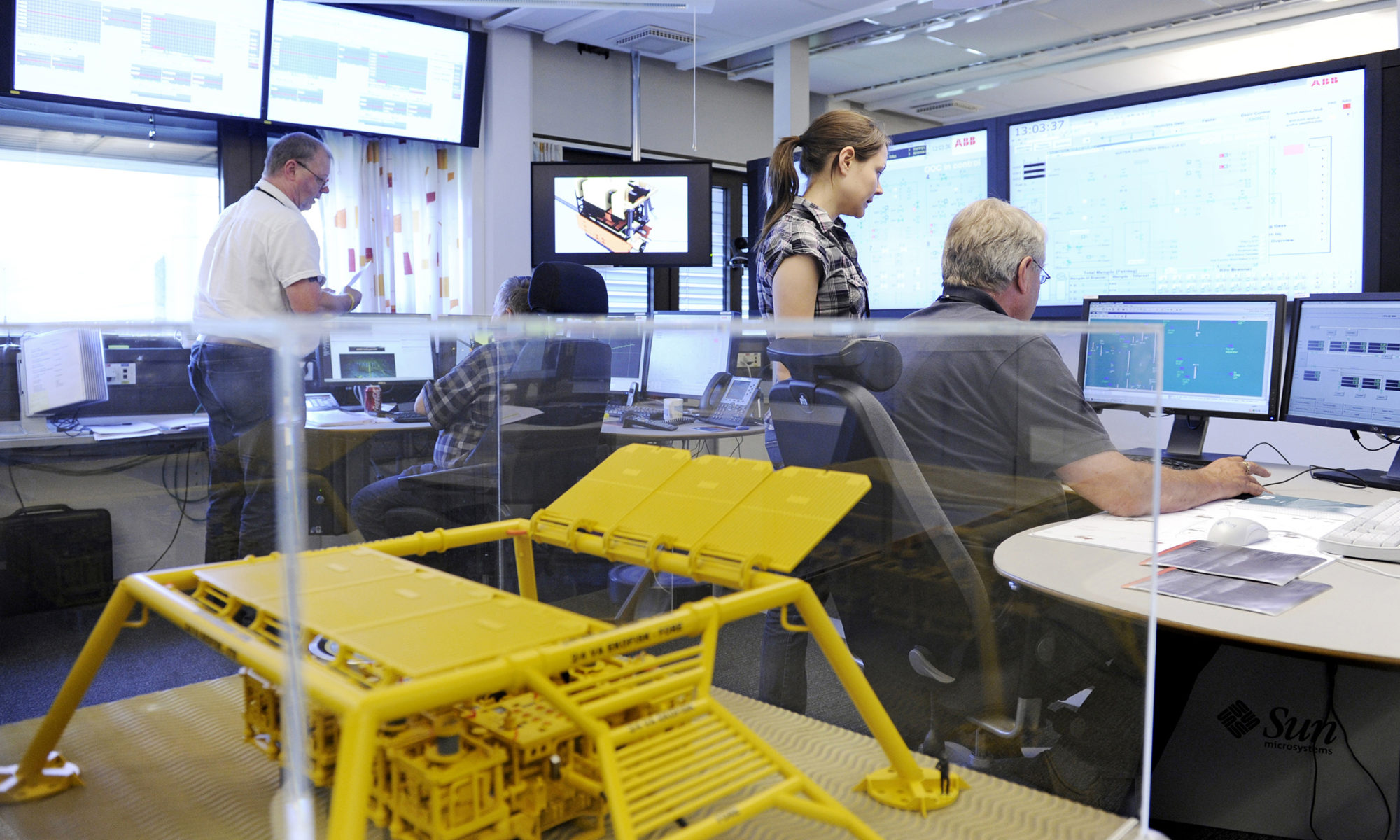Three subsea installations for water injection

Chalk (or carbonate) reservoirs are very compact, so that permeability is lower than in sandstone formations. Injecting treated seawater under high pressure helps to “open” the tight rocks so that hydrocarbon recovery improves.
From its start in the 1980s, such waterflooding on Ekofisk was conducted from surface facilities. The 2/4 K injection platform became operational in December 1987.
Ekofisk 2/4 W, originally a bridge support, was then converted for injection in 1989 and waterflooding stared from Eldfisk 2/7 E in January 2000.
The first subsea installation for water injection on the field was Ekofisk 2/4 VA in 2010, which was later joined by two similar facilities – 2/4 VB and 2/4 VC.
Ekofisk 2/4 VA (Victor Alpha)
Bringing 2/4 VA into operation in May 2020 marked the first time in the history of the Greater Ekofisk Area that water was injected from a subsea installation.
This was also the first ConocoPhillips facility on the Norwegian continental shelf (NCS) to be operated from land via the company’s new water injection control centre in Tananger.
Bente Nyland, director general of the Norwegian Petroleum Directorate (NPD), performed the official inauguration of the new onshore facility.
“This is an important step for improved recovery, which is one of the priorities on the NCS,” she observed. “It’s the result of daring steps taken when it was decided to try out waterflooding on Ekofisk in 1983, and is a big milestone for a longer producing life there.”
The 2/4 VA installation has a daily injection capacity of 120 000 barrels of water through eight wells, each with a maximum throughput of 30 000 barrels per day.
Injection water for the seabed facility, which replaced the 2/4 W platform shut down in 2009, comes from Ekofisk 2/4 K, where it is treated.
These supplies are then piped 4.1 kilometres to the template and injected under high pressure at the wellheads, just over 70 metres beneath the sea surface.[REMOVE]Fotnote: Pionér, no 2, 2015.
Choosing a subsea solution offered several advantages over a platform, including being smaller and thereby cheaper to build. Supplied by underwater veteran FMC at Kongsberg, it was brought in earlier than planned and below budget.
The installation was also cheaper to operate than a platform since the process could be operated from the onshore control centre at Tananger.
That was made possible by a high-speed fibreoptic umbilical, combining power supply, service lines and data transfer cables, which runs via Ekofisk 2/4 M to land.
An overtrawlable template design also meant that the seabed facility caused no problems for fishing operations.
The Maersk Innovator rig assembled and readied the template, manifolds, Xmas trees and other equipment on deck before placing the complete package on the seabed.
Remotely operated vehicles (ROVs) were used during the installation work, so that the whole process could be conducted without the need for diver assistance.[REMOVE]Fotnote: Pionér, nr. 3, 2010.
Ekofisk 2/4 VB (Victor Bravo)
The 2/4 VB subsea installation began injecting water in May 2013, three kilometres south of the Ekofisk Complex. It formed part of the Ekofisk South project approved by the Storting (parliament) in 2010.
So successful had the 2/4 VA facility proved to be that it was copied for 2/4 VB as an eight-well template, also delivered by FMC at Kongsberg.[REMOVE]Fotnote: https://www.regjeringen.no/no/dokumenter/prop-113-s-20102011/id642310/sec2
Similarly, the wells on 2/4 VB were drilled by Maersk Innovator. The well operation department completed installation of the template, manifolds and casing for the eight subsea wells.
Seabed installations carried out by Subsea 7 comprised a five-kilometre pipeline for water from the Eldfisk Complex as well as a diver-installed T piece welded into the existing pipeline from Eldfisk 2/7 E to Ekofisk 2/4 K.
This assignment also covered laying three kilometres of umbilicals combining hydraulic lines and fibreoptic cables from 2/4 VA, so that 2/4 VB could also be remotely operated from land.[REMOVE]Fotnote: Pionér nr. 6, 2012.
Ekofisk 2/4 VC (Victor Charlie)
The most recent water injection unit on the field, 2/4 VC, lies about three kilometres south of the Ekofisk Complex and became operational in the autumn of 2018.
Approved by the Storting in 2017, the development plan for this facility involved a fast-track project to enhance waterflooding efficiency on the southern flank of the Ekofisk reservoir. That would help maintain high oil and gas production.
The project was kicked off with drilling wells from the jack-up rig West Elara.[REMOVE]Fotnote: Bunnrammen for «Victor Charlie» satt på plass, Pionér oktober 2017.
While the seabed template used the same design as the earlier 2/4 VA and VB facilities, it only accommodated four wells compared with eight on each of the others.
The template was placed on the seabed by the Viking Neptun installation vessel, and tied back to the established water injection system on the field.
That was achieved by exploiting spare capacity in the existing water pipeline system with the associated control and operation umbilical.
Water is supplied from Eldfisk 2/7 E, power and signals from Ekofisk 2/4 M, and monitoring and control from the Ekofisk 2/4 K control room.
The project included laying a new 700-metre pipeline for water from a T piece in the existing pipeline to 2/4 VB. The latter’s umbilical was also extended to the new template.
Water began being pumped down well VC-03 on 28 September 2018 – right on schedule. The second well came on stream just under a week later.
Overall injection capacity from 2/4 VC will be 80 000 barrels a day from four wells when the installation has been fully developed.[REMOVE]Fotnote: Pionér 2018, nr. 3.
